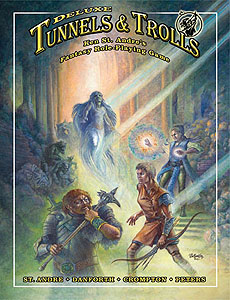
Tunnels & Trolls is a fantasy role-playing game designed by Ken St. Andre and first published in 1975 by Flying Buffalo. The second modern role-playing game published, it was written by Ken St. Andre to be a more accessible alternative to Dungeons & Dragons and is suitable for solitaire, group, and play-by-mail gameplay.
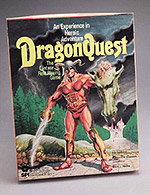
DragonQuest is a fantasy role-playing game originally published by Simulations Publications (SPI) in 1980. Where first generation fantasy role-playing games such as Dungeons & Dragons (D&D) restricted players to particular character classes, DragonQuest was one of the first games to utilize a system that emphasized skills, allowing more individual customization and a wider range of options.

Pool of Radiance is a role-playing video game developed and published by Strategic Simulations, Inc (SSI) in 1988. It was the first adaptation of TSR's Advanced Dungeons & Dragons (AD&D) fantasy role-playing game for home computers, becoming the first episode in a four-part series of D&D computer adventure games. The other games in the "Gold Box" series used the game engine pioneered in Pool of Radiance, as did later D&D titles such as the Neverwinter Nights online game. Pool of Radiance takes place in the Forgotten Realms fantasy setting, with the action centered in and around the port city of Phlan.
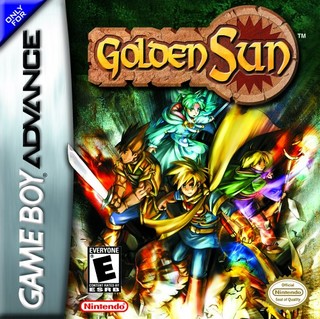
Golden Sun is a role-playing video game developed by Camelot Software Planning and published by Nintendo for the Game Boy Advance. It was released in August 2001 in Japan, November 2001 in North America and February 2002 in Europe.
In the Dungeons & Dragons fantasy role-playing game, psionics are a form of supernatural power similar to, but distinct from, arcane and divine magic.

Warhammer Quest is a fantasy dungeon, role-playing adventure board game released by Games Workshop in 1995 as the successor to HeroQuest and Advanced HeroQuest, set in its fictional Warhammer Fantasy world. The game focuses upon a group of warriors who join to earn their fame and fortune in the darkest depths of the Old World.

Might and Magic Book One: Secret of the Inner Sanctum is an early role-playing video game, first in the popular and influential Might and Magic franchise. It was released in 1986 as New World Computing's debut, ported to numerous platforms and re-released continuously through the early 1990s.
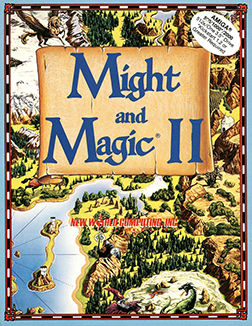
Might and Magic II: Gates to Another World is a role-playing video game developed and published by New World Computing in 1988. It is the sequel to Might and Magic Book One: The Secret of the Inner Sanctum.

Dungeons & Dragons: Shadow over Mystara is an arcade game developed and published by Capcom in 1996 as a sequel to Dungeons & Dragons: Tower of Doom. The game is set in the Dungeons & Dragons campaign setting of Mystara.
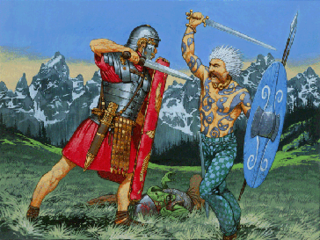
Nethergate is a computer-based historical fantasy role-playing game published by Spiderweb Software for the Macintosh and Microsoft Windows platforms. The game was released in 1998 by Jeff Vogel, and was Spiderweb Software's first game to feature a 45° isometric viewing angle. Nethergate offers players the choice to play on either side of the story, as Celts or Romans. The game's plot allows for several endings and many side quests, which accompany the main story. Spiderweb Software released a remake called Nethergate Resurrection in May 2007.

In the Dungeons & Dragons fantasy role-playing game, goblins are a common and fairly weak race of evil humanoid monsters. Goblins are non-human monsters that low-level player characters often face in combat.

Golden Axe II is a side-scrolling beat 'em up video game developed and published by Sega, first released on the Sega Mega Drive in December 1991. It is the home console sequel to the popular game Golden Axe, marking the second game in the series, though the arcade did see a sequel of its own in 1992, titled Golden Axe: The Revenge of Death Adder. Golden Axe II was only released on the Mega Drive, while the original was released on many other platforms. The game later appeared in Sonic's Ultimate Genesis Collection for Xbox 360 and PlayStation 3, as an iOS app on iTunes, and on the Nintendo Switch Online + Expansion Pack.

Dungeons & Dragons Tactics is a tactical role-playing game released on the PlayStation Portable handheld video game console. It is set in the world of Dungeons & Dragons and uses a strict interpretation of the Dungeons & Dragons 3.5 Edition rule set.
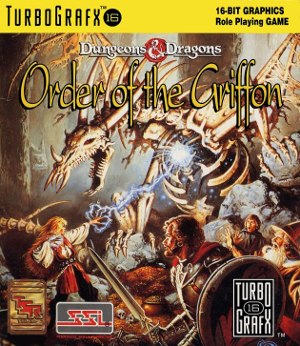
Order of the Griffon is a tactical role-playing game for the TurboGrafx-16 developed by Westwood Associates and based on the tabletop role-playing game Dungeons & Dragons (D&D). The game is set in the nation of Karameikos within D&D's Mystara setting.

The Sorcerer's Cave is a fantasy board/card game designed by Terence Peter Donnelly and first published in 1978. Though greatly simplified, it was inspired by the fantasy role-playing game Dungeons & Dragons. Unlike D&D, however, Sorcerer's Cave does not require "Dungeon Master" or referee. One of its strengths is that it can be played solo or competitively, as well as cooperatively. Another is the diplomatic aspect of interactions between players with changing agendas. In general, player(s) gather and control a party of adventurers who explore a multi-level dungeon that is randomly generated by drawing area cards from a deck. Encounters include special rooms, traps, monsters, allies, magical items and treasures.
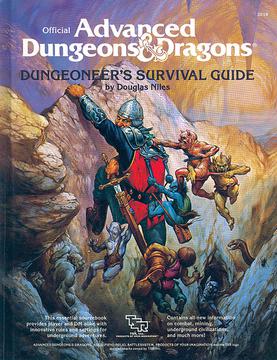
Dungeoneer's Survival Guide is a supplement to the Dungeons & Dragons fantasy role-playing game. The book was written by Douglas Niles, and published by TSR, Inc. in 1986.

Neverwinter Nights 2: Storm of Zehir is an expansion pack for the role-playing video game Neverwinter Nights 2, developed by Obsidian Entertainment and published by Atari Interactive. It was released in late 2008 in North America, Europe, and Australia. Like previous entries in the Neverwinter Nights series, Storm of Zehir is based on the paper and pencil fantasy role-playing game Dungeons & Dragons, and uses the game's 3.5 edition ruleset.
Dragon Quest is a series of role-playing video games that originated in 1986 with the release of the first game in the series. Although the games are not related in terms of story, many aspects of the gameplay are consistent throughout the series. Each game in the series add new elements to the gameplay, such as longer quests, character classes, or different ways of story-telling.
Pool of Radiance is a series of role-playing video games set in the Forgotten Realms campaign settings of Dungeons & Dragons; it was the first Dungeons & Dragons video game series to be based on the Advanced Dungeons & Dragons rules.
















